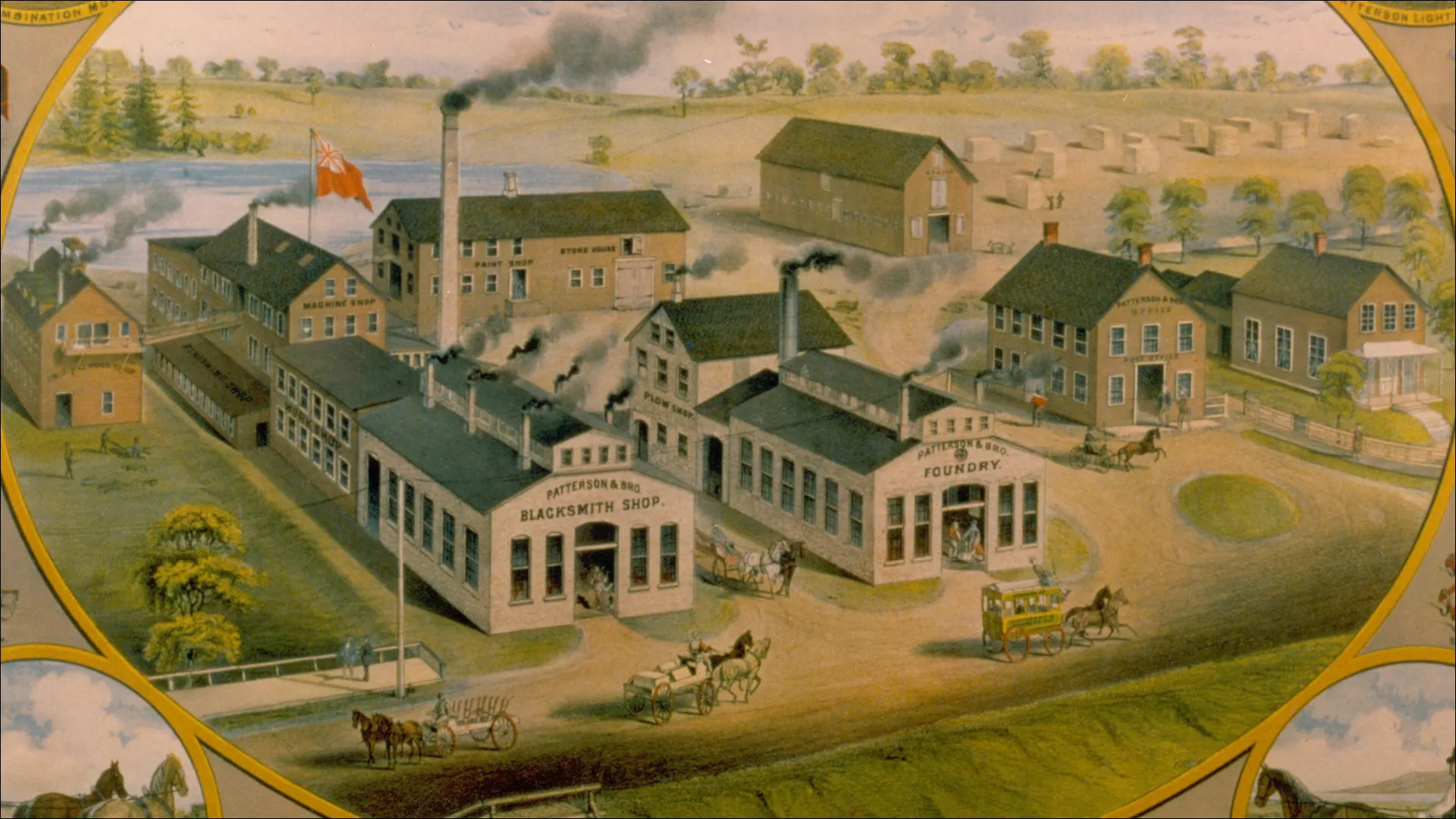From the Archives
Patterson Village
The City of Vaughan’s archives house more than 600 collections dating from the early 1700s to the present day. Within these files are the stories of how Vaughan evolved from the traditional territories of the First Peoples of Turtle Island to the bustling city it is today.
Let’s take a look back at our history and share the stories of the people, places and moments that helped shape the city we know today. This month’s feature is on Patterson Village.
Peter Patterson was born in Londonderry, New Hampshire, in 1825. His family moved to New York in 1829, where Peter and his brothers started a company designing and manufacturing farm supplies. After learning the basics of the business, Peter and his brother, Thomas Patterson, immigrated to Canada and began manufacturing fanning mills in Richmond Hill.
By 1853, Peter and Thomas purchased Lot 21, Concession 2 in Vaughan known as Patterson Village (present-day intersection of Major Mackenzie Drive and Bathurst Street on the northwest corner). This property had access to water rights which allowed the construction of a dam on the Don River to provide waterpower for the new factory, called Patterson and Brothers.
Thomas returned to New York in 1858, while Peter remained in Upper Canada and proceeded to build a company town with houses for employees and their families, and a boarding house for single men, based around the factory, which made it easier for them to get to work on time. There were rules required for living in the company town, including a ban on alcohol and smoking within the village. In return for following the rules, the company offered affordable rent – just a couple of dollars a month. The houses were situated on sizeable lots with room for tenants to plant their own gardens and fruit trees to supplement their diet. Peter also donated land for a school, built in 1871 on the west side of Bathurst Street, north of the Major Mackenzie Drive intersection.
Patterson and Brothers was successful and continued to grow over time. In 1886, the company relocated to Woodstock to be closer to a railway line. As the business had been the Patterson Village's main employer, its departure led to a decline in the local population, with many residents moving away in search of other work.
Archaeological digs were conducted on the site in 1987, 2006, 2010 and 2012, which revealed the presence of Indigenous artifacts. These artifacts included several shards and a projectile point, which indicated that a Huron-Wendat village may have been present in the area before 1500 AD. Located in the Territory and Treaty 13 lands of the Mississaugas of the Credit First Nation, the city of Vaughan rests upon the traditional territory of the Huron-Wendat and the Haudenosaunee peoples.
VIEW VAUGHAN'S ARCHIVES ONLINE!
Looking for more information about the history of Vaughan? The City's Archival Collection is on digital display for all to explore! The below galleries are available in the City's online gallery on Flickr:
- From Township to City: The Evolution of Vaughan
- Historical Families of Vaughan
- Historical Photography
- Past Mayors of Vaughan
- Prohibition in Vaughan
- Recollections of Rural Vaughan
- The Great Depression in Vaughan
- The Mary Wood Collection
- The Way We Were: Representations of Vaughan's Past
- Vaughan’s Forgotten Heroes
- Vaughan Lodge Fonds
- Vaughan Working Environments
- Vaughan Through the Ages: Medicine, Music and Sports and Recreation
- And more!
A personal Flickr account is not required to access the City's online gallery, which contains only a small selection of the full archives collection. If you are looking for a particular image, original file, primary source record or more, please visit the Archival Database or contact the City by calling 905-832-2281 or emailing archives@vaughan.ca.
By managing and preserving both City and community records, the City’s Enterprise Information Management Services team ensures that Vaughan's rich and varied history will continue to be available for future generations. Learn more at vaughan.ca/archives.
For the latest updates, subscribe to Vaughan News and follow the official corporate channels on X, Facebook, Instagram and LinkedIn.





